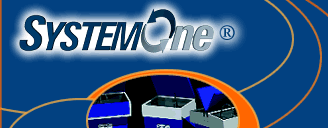 |
|||||||||||||||||||||
 |
|||||||||||||||||||||
 |
|||||||||||||||||||||
 |
|||||||||||||||||||||
MATERIAL SAFETY DATA SHEET
![]()
QSOL™100 CLEANING SOLVENT
|
HMIS HAZARD RATING |
FIRE |
REACTIVE |
TOXICITY |
SPECIAL |
|
4=EXTREME |
2 |
0 |
0 |
0 |
|
SECTION 1 - PRODUCT INFORMATION |
|
Distributed by: SystemOne Technologies Inc., A Mansur Industries Company Date Revised: February 8, 2000 CAM |
|
Address: 8305 NW 27th Street, Suite 107; Miami, FL 33122 Telephone No.: 1-305-593-8015 Emergency No.: 1-800-535-5053 |
|
Trade Name: SystemOne QSOL 100 Parts Cleaner Product Type: Hydrotreated hydrocarbon PD-680 Type 2 |
|
SECTION 2 - HAZARDOUS INGREDIENTS |
|
CHEMICAL NAME/COMMON NAME CAS NO. PERCENT (optional) TLV PEL CEL |
|
|
|
Aliphatic Petroleum Distillates / Hydrotreated / 64742-88-7 100 NE NE N/A PD-680 Type 2 |
|
SECTION 3 - PHYSICAL DATA |
|
Boiling Point: 365-402F Specific Gravity: 0.79 pH: N/A Vapor Pressure (mmHg): ca. 0.5 Vapor Density (Air=1): ND Solubility in Water (% by weight): Virtually insoluble Percent Volatile (by wt.): 100% VOC (g/L by Wt): 0.790 kg/L Evaporation Rate (vs. H20 = 1.0): >1.0 Freezing Point: ND Appearance and Odor: Clear, colorless liquid with slight odor Odor Threshold: ND |
|
SECTION 4 - FIRE AND EXPLOSION HAZARD DATA |
|
Flash Pt. TCC: 143F Combustible Liquid: Yes Explosive Limits in Air: by % Volume / Upper: 7.0 Lower: 1.0 Extinguishing Media: Foam, dry chemical, carbon dioxide, water fog or spray. Drums heated by a fire can burst. Ground electrical Equipment while handling. Fire Fighting Procedures: Evacuate all unnecessary personnel. Shut down motors, pumps, and electrical service. Use water spray to keep fire-exposed containers cool to avoid pressure buildup. Wear NIOSH/MSHA approved positive pressure self-contained breathing apparatus and full protective clothing. |
|
SECTION 5 - REACTIVE DATA |
|
Stability: Stable Incompatibility: None known Reacts with: Avoid contact with Oxidizers Hazardous Decomposition Products: Oxides of carbon Hazardous Polymerization: Will not occur |
|
SECTION 6 - HEALTH HAZARDS |
|
May cause irritation by all routes of exposure. May produce symptoms of central nervous system depression including headache, dizziness, nausea, loss of balance and drowsiness. Signs and Symptoms of Over-exposure (Acute): May be irritating to eyes and skin. Defatting to skin on repeated contact. Signs and Symptoms of Over-exposure (Chronic): Prolonged or repeated breathing or swallowing of large amounts may cause liver damage. Ingestion may cause damage to the gastrointestinal tract. Medical Conditions Aggravated By Over-Exposure: Unknown |
|
SECTION 7 - EMERGENCY AND FIRST AID PROCEDURES |
|
Eyes: Immediately flush eyes with water for 15 minutes, holding eyelids open if necessary. Get medical attention if irritation persists. Skin: Wash thoroughly with soap and water. Wash clothing before reuse. Get medical attention if irritation occurs. Ingestion: Do not induce vomitting. This material is not soluble. Do not give fluids.Get medical attention immediately. Prevent aspiration if vomiting occurs. Inhalation: Remove to fresh air. If breathing is difficult have trained person administer oxygen. If respiration stops have a trained person administer artificial respiration. |
|
SECTION 8 - SPECIAL PROTECTION INFORMATION |
|
Respiratory Protection: No special requirements Ventilation Requirements: General Exhaust Protective Gloves: Chemical resistant protective gloves Eye Protection: Safety glasses Other Protective Clothing: Plastic or rubber apron |
|
SECTION 9 - SPILL OR LEAK PROCEDURES |
|
Wear chemical safety goggles plus full face shield, chemical resistant gloves, plastic/rubber apron. Evacuate unnecessary personnel and eliminate all sources of ignition. Use NIOSH/MSHA approved positive pressure self-contained breathing apparatus. Utilize respiratory protective equipment in accordance with 29CFR 1910.134. Waste Disposal Methods: Any method in accordance with applicable laws. |
|
SECTION 10 - STORAGE AND HANDLING INFORMATION |
|
Store in a cool, ventilated area. Vapors are heavier than air and will collect in low places. Precautions to be taken in Handling and Storage: Keep container closed during storage. Keep out of reach of children. For industrial or institutional use only. Maintain levels of airborne contaminants under exposure limits by general room ventilation / local exhaust. Avoid heat, sparks, pilot lights, welding, and open flame. |
